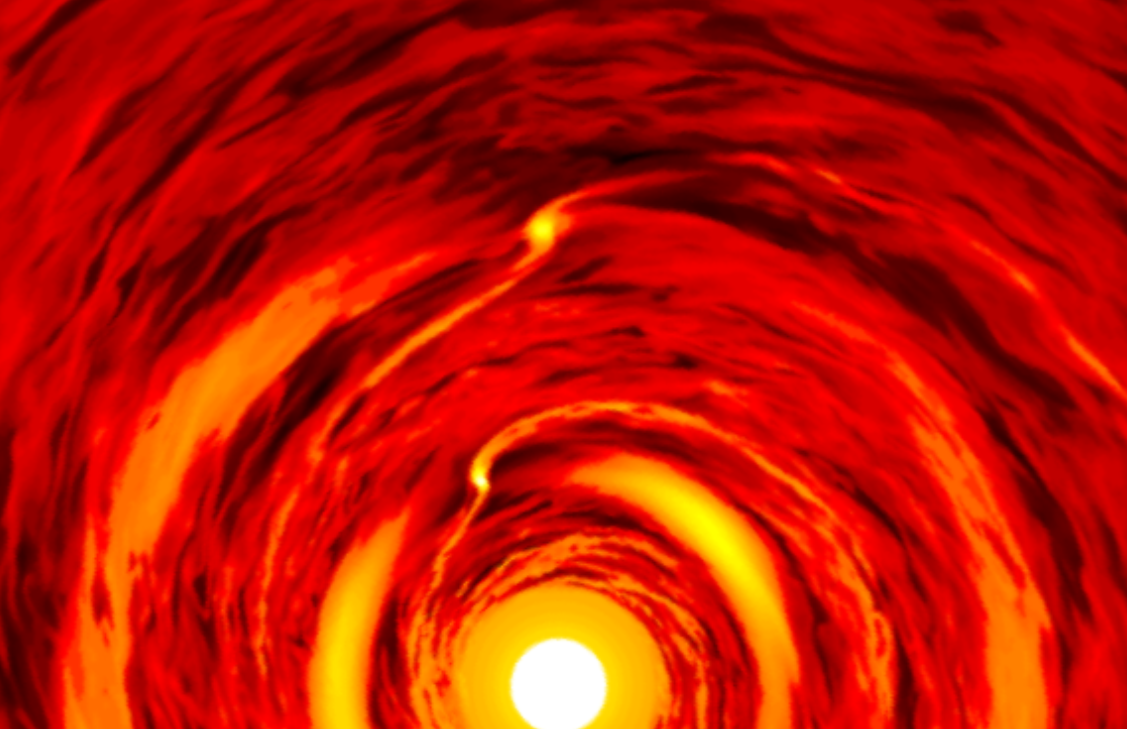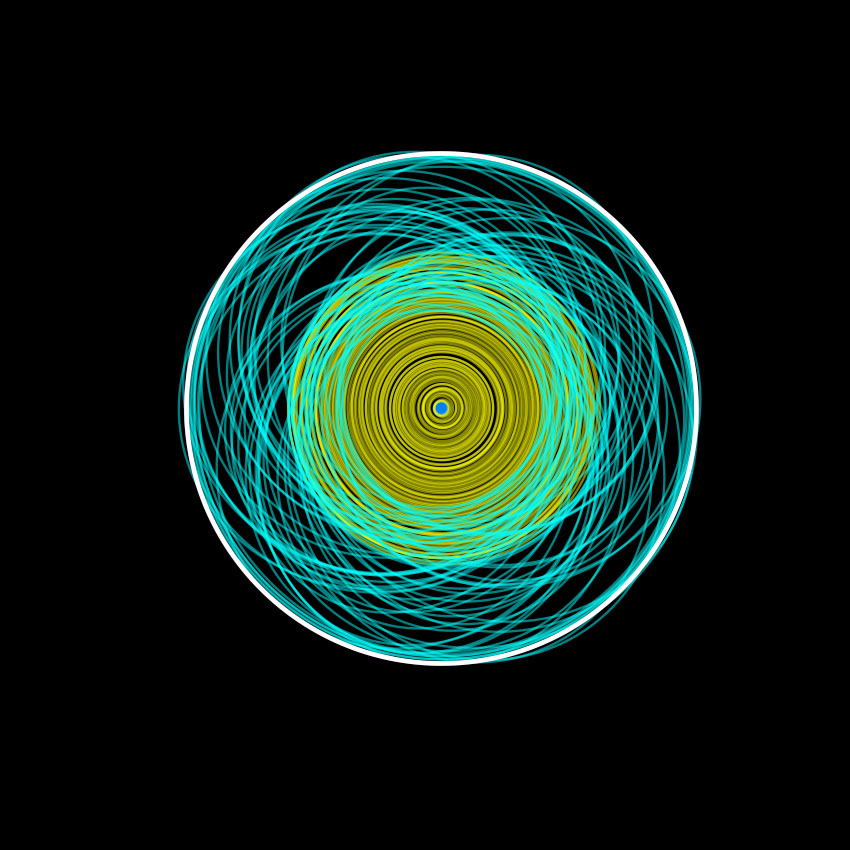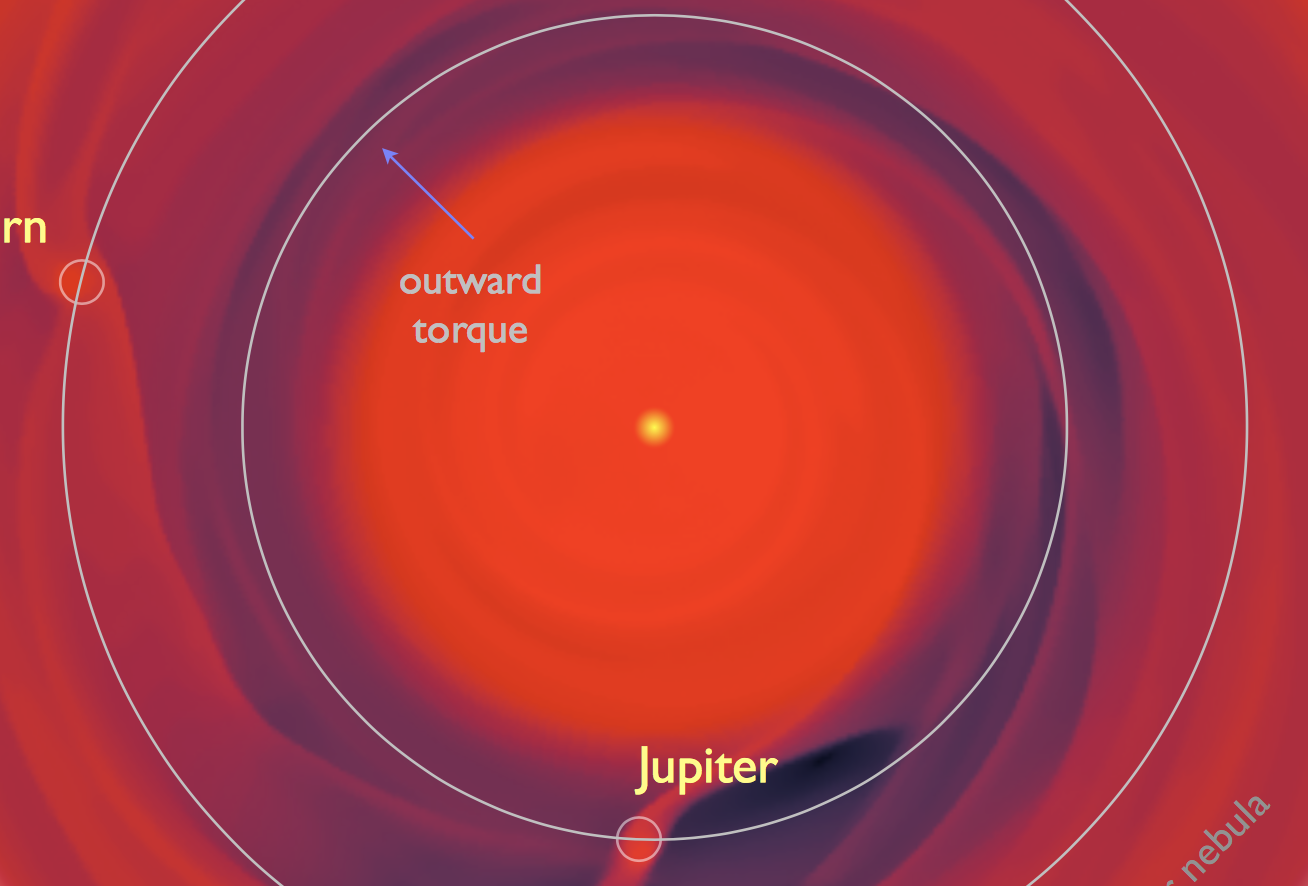Early evolution of the Solar System
Understanding the formation and the early evolution of the Solar System ranks among natural science’s grand challenges. However, viewed in the context of the emerging population of extrasolar planets, the Solar System, which contains no Super-Earths (or close-in planets of any type), but harbors two bona fide giant planets on circular orbits, appears increasingly abnormal. What physical processes were responsible for sculpting the solar system's unique architecture, and more specifically, why is the solar system devoid of any objects inside Mercury’s 88-day orbit?
A number of detailed features of the solar system (e.g., the compositional diversity of the asteroid belt, Mars’ comparatively small mass, etc.) can be explained by the Grand Tack evolutionary scenario, which proposes that upon formation, Jupiter suffered a brief period of inward migration, before reversing direction due to interactions with Saturn (Masset & Snellgrove 2001; Walsh et al. 2011). In Batygin & Laughlin (2015), we showed that the same sequence of events naturally accounts for the hollowed-out nature of the inner Solar System. Particularly, our calculations demonstrate that Jupiter’s early migration initiated a collisional cascade that effectively destroyed the Solar System's first-generation attempts at forming close-in super-Earth’s, leaving behind volatile-depleted debris from which the terrestrial planets later formed. In Storch & Batygin (2019), we presented a more complete theoretical description of this process.
In addition to contextualizing the Solar System within the galactic planetary census, this work underscores a critical consequence of giant planet migration in general. The existence of systems of close-in Super-Earths (as found most commonly throughout the galaxy) and distant giant planets (as found in the Solar System) are largely mutually exclusive. A direct repercussion of this theory is the prediction that truly Earth-like planets, with solid surfaces and modest atmospheric pressures are very rare.



